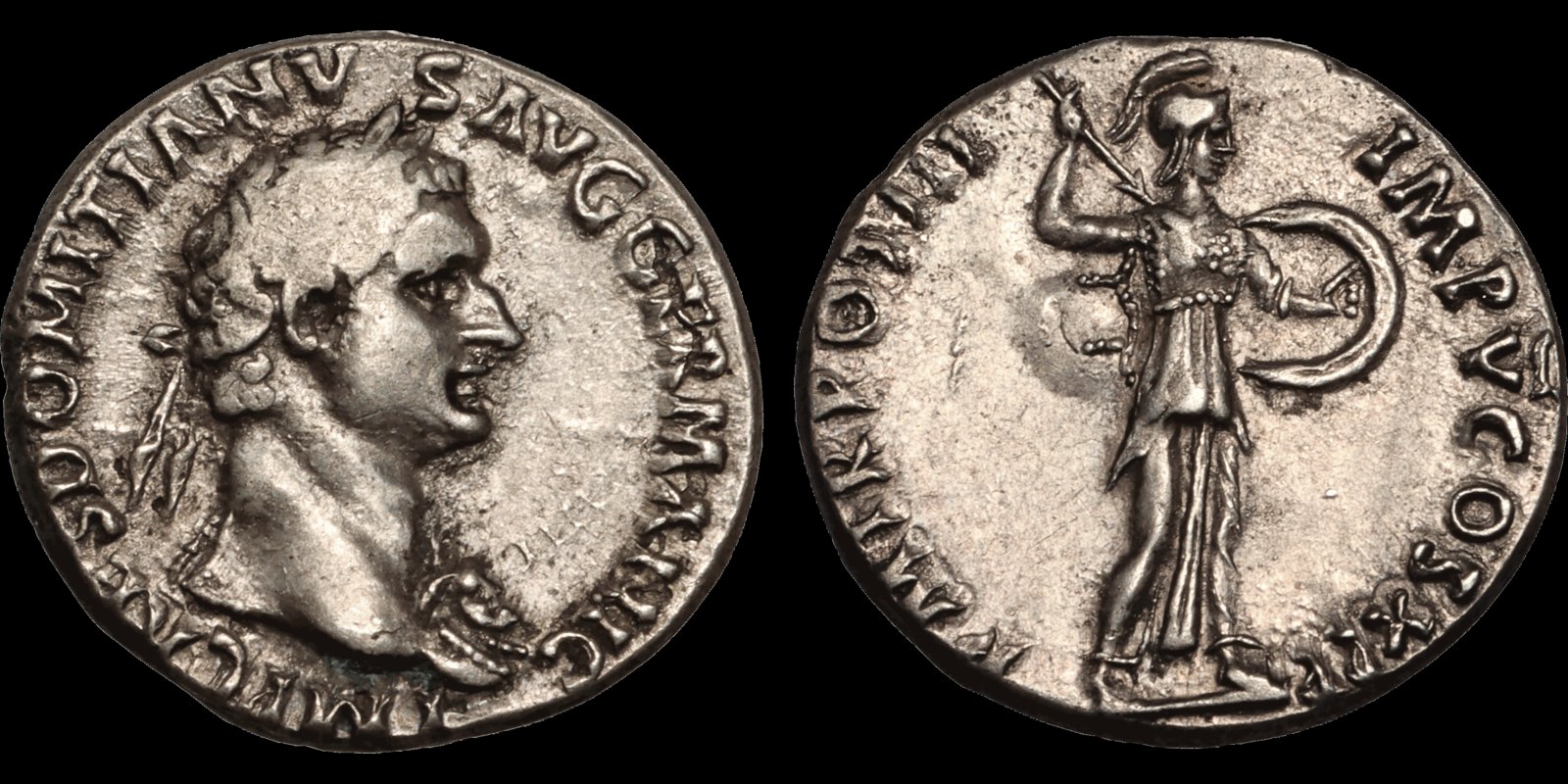Search All Current Lots for Sale:
E-Auction 47 Lot 98

Domitian. A.D. 81-96. Fourrée denarius. 3.18 gm. 18 mm. Rome mint. Struck A.D. 85. His laureate bust right, wearing aegis; IMP CAES DOMITIANVS AVG GERMANIC / Minerva advancing right, holding spear and shield; P M TR POT III IMP V COS X P P. I. Carradice, Plated Denarii of the Flavian Period in The Numismatic Circular no. 9, London 1980, p. 306, type 7. Cf. RIC II.1 176 var. (bust type). Cf. RSC 355 var. (bust type and legend). Near Extremely Fine; in exceptional condition for a fourrée.
Ex Gibraltar Hoard.
The Gibraltar hoard was first announced by Ian Carradice in an article published by the Numismatic Circular in 1980, and subsequently published in a supplementary article in December 1984 and later by Carlo-Maria Fallani in 1986. The hoard was believed to have originated in southern Spain, perhaps in Gibraltar or the immediate vicinity (Fallani), although the exact date of the find is unclear. Carradice reported that over 200 coins from the hoard had been seen together in the late 1960s, with 150 remaining together as of the late 1970s and many appearing in trade in the interim.
A fourrée is a coin struck on a base metal core but plated with a precious metal. The profit potential is obvious — passing off base metal coins as more valuable precious metal coins. A fair amount of mystery and variety surrounds their manufacture. Some specialists contend that some fourrées may have been struck with official dies, but generally one can assume a fourrée is unofficial or counterfeit. One can speculate that coins may have been produced by mint workers moonlighting, struck with stolen or retired dies, struck for use as local currency or money of necessity, produced by barbarous peoples striking an imitative coinage, or simply made by blatant counterfeiters. Various techniques were used.
Fourrées of ancient coins present a fascinating collecting area. They are genuine ancient artifacts produced at the time, and tend to be less expensive than their official precious metal counterparts. And they tend to show up often enough to make them eminently collectible.

